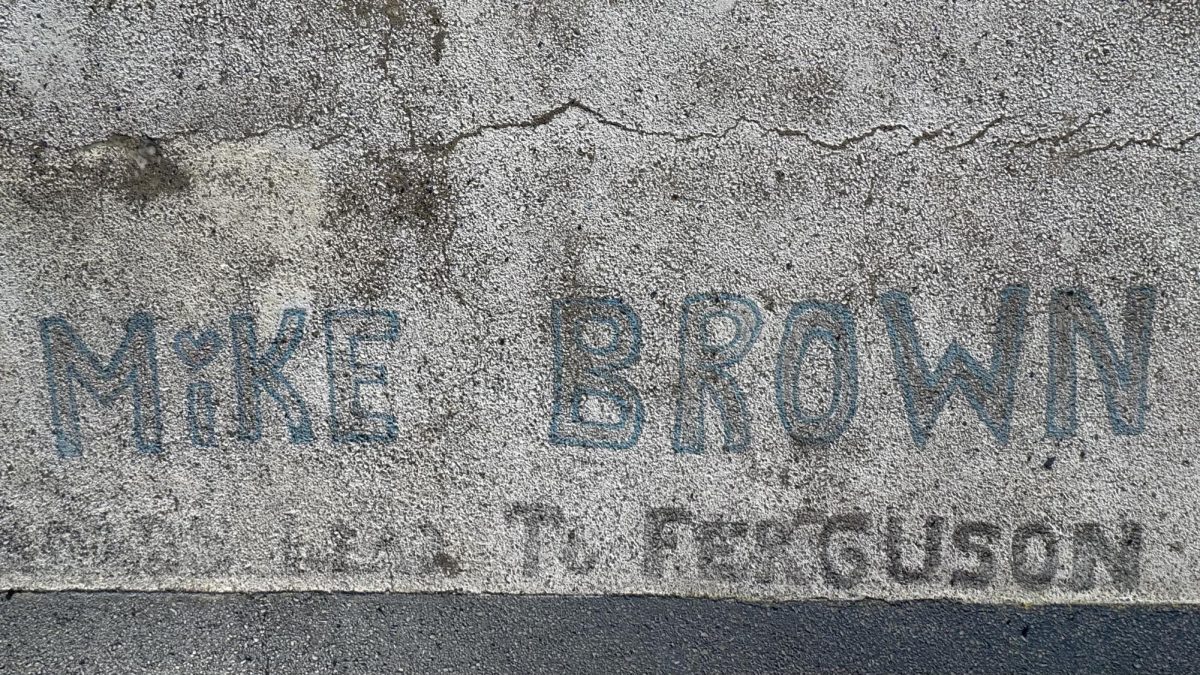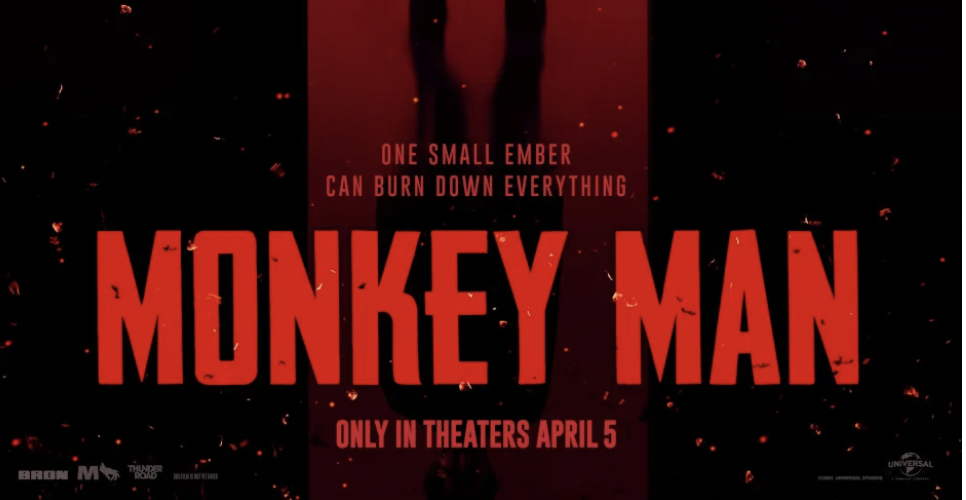Dev Patel is a British actor and filmmaker who made his directorial and co-writing debut with the release of “Monkey Man.” The film is also produced by Jordan Peele, who has been paving the way for original and gripping storytelling since “Get Out” in 2017. Patel is best known for roles in “Slumdog Millionaire”, “Lion”, and “Skins.” In “Monkey Man” his character, Kid, is haunted by traumatic episodes that led him to a life of struggle and violence with one goal in mind: revenge.
The film opens with a glimpse of Kid’s childhood with his late mother Neela (Adithi Kalkunte, “Hotel Mumbai, “Special 26”) reading him the story of the Hindu god Hanuman who is half-monkey, half-human (“The Story of Hanuman”, Durham University). This is a central point in his life for many reasons. The story of Hanuman is symbolistic of his life’s trajectory after his village is burned down due to corrupt political gain and greed for land. The introduction seems well-placed, as the film returns to the present time of Kid making ends meet through underground fighting.
He has already taken the alias of a monkey, wearing the mask as he fights, influenced by his mother’s teachings of Hanuman. We meet him well into his plan to invade the inner circles of India’s “fast life” which influential leaders and law enforcement alike, indulge in, (“Fast life” referring to living recklessly and quickly with a lot of drugs and sex.)
He strategically masquerades as an honest worker (janitor and waiter for an elite club) and makes connections with his peers who are, as a community, also disadvantaged by classism and corruption. He has physical scars of his hard life (a burn from the fire set to his village) and a promise to do the dirty work no one else does. He works for this club daily Cinematographically, this plays out as quick cuts that represent the quickness of a life consumed by drugs, crime, corruption, and sex. This is a type of justice that can only be served by certain access.
Throughout his life, Kid has suffered from PTSD due to watching his mother get beaten and set on fire by a dirty chief police officer. Kid also experiences panic attacks as he works consistently, both serving as painful reminders and motivation for killing the officer.
Some watchers might feel that these first 45 minutes to an hour lack action aside from his few underground fights, but its purpose is to show the reality of poor working-class people who have nowhere to put their pain and no one to help them alleviate it, especially in a society with all odds working against them.
After working his way up to the more exclusive level of the club/brothel, Kid is overcome by his emotions and trauma. Kid’s constant proximity to the lifestyle and people that ruined his life forces Kid to close in on his plan prematurely. This is where the theme of faith regarding Kid’s likeness to Hanuman begins to strengthen. The story of Hanuman, as represented in the film, reaches its conflict when Hanuman gets too hungry. Out of his extreme hunger he mistakes the sun in the sky for a fruit. Without thought, he jumps up to grab it for himself, but his struck down by the god Indra because of his mistake.
This is symbolic of Kid’s overwhelming emotion at the sight of the man was employed to destroy his community. Because of his haste, he throws caution at his years-long developed plan of infiltration and tries to kill someone in a reckless way. Much like Hanuman, Kid fails at his attempt and is shot.
The Hijra community are the ones who find Kid after he is shot. The community remains untouched by the main antagonist and his ulterior evil plans, but not without effort. Fortunately for Kid, this makes it easier for him to stay hidden. In Indian culture, the Hijra are said to have the power of blessings or cursing and in the film, they bless Kid, (Hijra, kothi, aravani: a quick guide to transgender terminology).
They tend to his wounds, pray for him, and give him a place to rest and eat.
This is another show of a community disadvantaged by corruption that show unity with each other and humanizes the third-gendered communities of India. Throughout the film, the symbolism of Kid’s life with the legend of Hanuman is powerful, inventive, and detailed. Intertwining the theme of Hindu faith with modern political and moral struggles of Kid’s life is a great idea.
Seeing the humanity of the Hijra was Kid’s call to reality that others were hurt and not just his mother. This fact along with the strengthening ritual, is made clear towards the end, as he helps the struggling community of the Hijra.
The ending of the movie feels rushed like a second plot is trying to present itself in the last 30 minutes. Despite that rushed feeling, it still feels cohesive with the likeness of Kid and Hanuman’s story, who learns how to fight for more than just himself. However, this does not dim Kid’s violent and gory fight scenes, as the weight of carrying justice for more than him and his mother, motivates the sharp rawness of his violence. Being that there is extreme violence and gore, please watch with caution. If “John Wick” was a hard watch in terms of violence, then “Monkey Man” might be difficult to watch as well.
“Monkey Man” is a solid action-packed film with emotional and realistic storytelling of social and political struggles that apply today. The film executes creative themes of Hindu beliefs within the story and with constant visual imagery of Hanuman. “Monkey Man” does well at uniquely emphasizing Indian culture with its themes and by primarily employing Indian actors.
The acting of the main and supporting characters was extremely realistic. As scenes play out of Kid’s routine life of poverty in Mumbai, Patel and the supporting characters truly make the audience feel as if they are in the moment with them. The movie was filmed in Indonesia and the plot was set in India, so for many American viewers, it was very immersive and eye opening.
Also, a key part that I enjoyed was the lack of subtitles unless speaking in a different language. Anyone who spoke in English, but had a thick accent, was not accommodated by subtitles for the audience which I believe offered more realism.
The fight scenes were quick-paced and chair gripping much like “John Wick”. They executed these scenes in such a way that if you blink you might miss something, but considering how violent it is, you might wish you had not seen it. In the theatre, the audience had visceral reactions to most of those scenes.
Some of my favorite scenes were obviously the action, but also the snapshots of memories Kid had with his late mother. I found these to be the most compelling and emotional. As they first introduce Kid’s memory at the beginning, the camera is unsteady which gives the impression of the viewer being there in the moment. They utilize close cuts of his late mother Neela, such as the upper left corner of her face and her eye. Those close cuts set up the path for what later will be more scenes of Kid’s with his mother but encapsulated as his panic attacks triggering moments of his past. They effortlessly flicker from the moment at the beginning where he is being read a story, to a time they walk through the woods, leading up to moments of his village burning down. The execution of his memories and his panic attacks set the importance of his love for his mother, hence the intense effect of her death showed throughout flashes of his trauma.
Dev Patel and Jordan Peele put together one of the best movies of this year and hopefully they will do more work together. “Monkey Man” is still showing in theatres, and it is indeed worth a watch on the big screen.






















